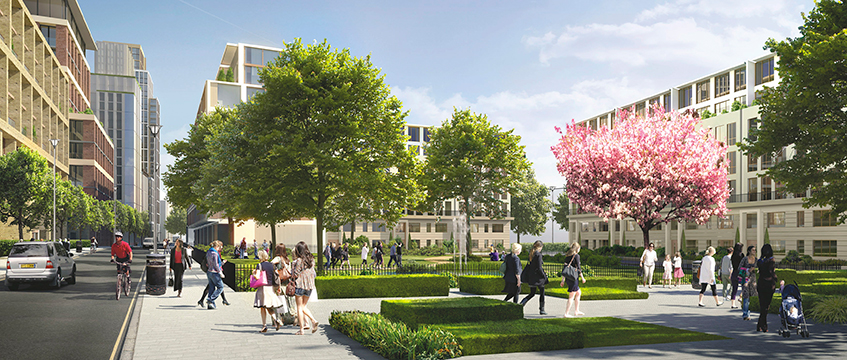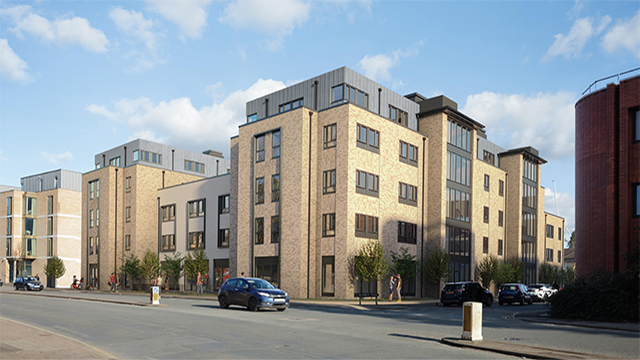What could a CapCo demerger mean?
The proposed division of Capital & Counties into two separately listed businesses for the £2.5bn Covent Garden estate and the £759m Earls Court scheme could mean one or both of the new companies being taken private.
CapCo announced today that it was considering a potential demerger that would see the residential development at Earls Court and its retail estate at Covent Garden split out.
The intention would be to create two smaller and stronger companies focused on their respective areas.
The proposed division of Capital & Counties into two separately listed businesses for the £2.5bn Covent Garden estate and the £759m Earls Court scheme could mean one or both of the new companies being taken private.
CapCo announced today that it was considering a potential demerger that would see the residential development at Earls Court and its retail estate at Covent Garden split out.
The intention would be to create two smaller and stronger companies focused on their respective areas.
But the move has divided opinion among commentators and while it could strengthen the balance sheet of Coven Garden at least, it could also expose both companies to future takeover deals.
Earls Court
A separately listed Earls Court would hope to attract investors and financial backing that is more accepting of the perils of the London residential development market.
However, one investor pointed out that if the listing price was particularly low it could almost immediately see take private bids in a secondary process. While there have been reports of both Berkeley and a sovereign wealth fund running the numbers on the 7,500-home site, there has been speculation that if its value drops enough it could work for a cash-rich build-to-rent developer.
Hemant Kotak, managing director at research firm Green Street Advisors, said: “Theoretically, the two demerged companies should have a better overall rating, which should reduce the overall takeout probabilities; although, if Earls Court still continues to trade at a large discount, then it may remain a target.”
Alternatively, it could be looking for a longer-term funding partner: CapCo had already brought forward the first phase at Lillie Square with Kwok Family Interests.
“There is a lot of money still looking for a home and London remains an attractive destination; the next six months should see a number of groups working the abacus on the respective assets,” said Tim Leckie in the JP Morgan Property Ticker.
Conceived when the residential market was booming, the 7,500-home masterplan and its prime pricing began to flag in 2015. In H2 2017, just seven flats were reserved at phase 2 of the Lillie Square development, down from 27 in H1. Its value has dropped by 27.9% since mid-2015.
Covent Garden
Turning Covent Garden into a separate retail REIT was more warmly received and “should unlock the discount on the retail assets”, said Leckie.
However, this makes its future more uncertain.
The separate listing could be setting the estate up for a secondary take-private deal. And, decoupled from Earls Court, it would be attractive to many investors. However, it would be expensive.
Next door, Shaftesbury generally trades at a value not heavily discounted to NAV and relative to other REITs. A take-private of Covent Garden could end up paying a premium on top of a premium.
“The move may also be considered a defensive move against bidders trying to get to CapCo on the cheap, as showing the embedded value of the separate businesses increases the price any bidder would have to pay,” said Kotak.
As a result it would also trade well as a prime-central London-focused REIT. Valued at £2.5bn at the end of 2017, it saw an 11.9% increase in value and a like-for-like increase of 4.3%, while net rental income rose by 11.3%.
However this was not a view shared by all.
“A nosebleed cap rate of 2.1% on aggressive rental growth assumptions from £58.9m passing to an all-in ERV of £104.8m and an optimistic management target of £125m by 2020, and the sell-off in SHB yesterday post the interims doesn’t bode well,” said Jefferies analyst Mike Prew.
How a de-merger would work
CapCo said should a demerger happen, it would be completed by the end of the year.
No details have yet been released on the process, but it is most likely the demerger would see shareholders given their equivalent percentages in each separate company. A 20% shareholder now would have 20% in each company, and then be free to sell or buy shares in whichever company they wished to focus on.
CapCo was created by a demerger in 2010 in split from Liberty International, which in 2013 became Intu Properties. The intention was to use Covent Garden income to fund Earls Court.
Managing director and chief investment officer Gary Yardley would head Earls Court, while chief executive officer Ian Hawksworth would lead on Covent Garden.
Chairman Ian Durant announced he would resign despite being “supportive” of the proposed merger and Henry Staunton, currently senior independent director, will replace him from 5 June 2018.
To send feedback, e-mail alex.peace@egi.co.uk or tweet @egalexpeace or @estatesgazette











